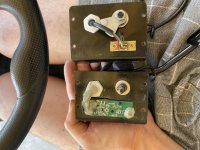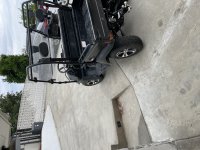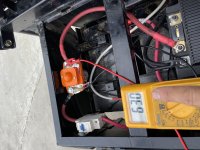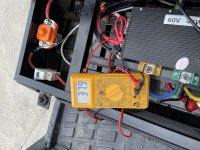It's a lot easier to do it the other way around: to make a pot work as a throttle on a controller expecting a hall.

The problems:
1: A pot based controller usually expects zero throttle to be zero volts.
2: It expects full throttle to be the full voltage it sends out to the pot (usually 5v).
1: A hall throttle never goes to zero volts; it usually goes only down to about a volt, sometimes more, which is sometimes a significant amount of throttle to the controller.
2: It also never goes up to 5v, usually less than 4v.
1: So if you used a hall sensor throttle on a potentiometer-based controller, then the hall will always output enough voltage to cause the motor to run.
2: It also will never provide full throttle, so the controller will never spin the motor at full speed/power.
This post:
https://endless-sphere.com/forums/viewtopic.php?f=2&t=5880&hilit=pot%2A+hall+throttle#p88081
gives one way you might fix the first problem, and keep the motor from running when it shouldn't.
But it will probably make the second problem even worse, by reducing the top voltage even more.
You can build an op-amp circuit (probably even just a transistor one) to compensate for this, though I don't have a diagram handy. If you don't have electronics experience, there's a lot of info over on http://allaboutcircuits.com but it may be a steep learning curve before you get to where you can figure what circuit to actually build. I can't remember exaqctly what to do at the moment, as far as which components to use and what values, but basically you just need to scale the voltage output of the hall in a way that makes it's lowest voltage zero, and it's highest voltage the full input voltage to the throttle from the controller.
I think a regular non-inverting amplifying op-amp circuit should work, but it might also require first an offset-creating op-amp circuit; I'm not sure...too tired to think about it clearly.
you could also get a couple of digipots from maxim and wire them up to each other with some other bits to convert the hall votlge to a resistance. might stil have to scale things though.
might be more info here
https://endless-sphere.com/forums/viewtopic.php?f=2&t=28466&hilit=pot+hall+throttle
or here
https://endless-sphere.com/forums/viewtopic.php?f=30&t=90837&hilit=pot*+hall*+throttle*
or in one of these
https://endless-sphere.com/forums/search.php?keywords=pot*+hall*+throttle*&terms=all&author=&sc=1&sf=firstpost&sr=topics&sk=t&sd=d&st=0&ch=300&t=0&submit=Search



![874166D6-527A-437E-92E6-3A2ACF0C4221[1].jpeg](/sphere/data/attachments/185/185633-45b40d9e4bf2e87fc6505cd79f8c6172.jpg)


